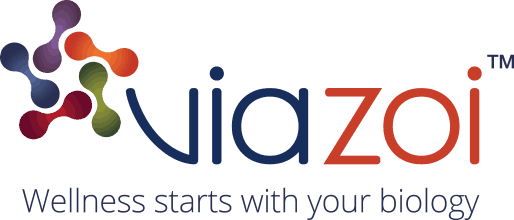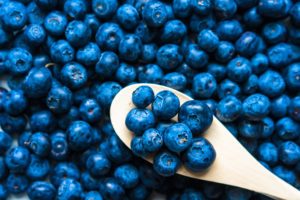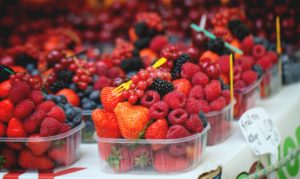Last month, we discussed environmental and hereditary cancer risk factors. While there are cancer risk factors that aren’t always completely in our control, there is a category of risk factors that is totally within our control: Lifestyle.
“We are our choices.” – Jean-Paul Sartre
A Healthy Lifestyle Can Save Your Life

We make choices every day that contribute to our good or bad health and these choices can make it less or more likely to develop cancer. In addition, should cancer develop, these choices can impact a patient’s prognosis. A person who leads a healthy lifestyle and is diagnosed with cancer as a result of inherited risk may respond better to treatment and/or have better chances for survival than a person who leads an unhealthy lifestyle.
The burning question is, if preventing cancer is, at least with regard to lifestyle, within our control, why doesn’t everyone form healthy habits?
In some cases, it may be due to ignorance, a lack of knowledge about cancer and its causes, or emotional or psychological factors that impact lifestyle decisions. In other cases, it may be that the possibility of cancer is considered so far-fetched that people don’t feel the need to be more intentional about their lifestyle choices. Yet another possibility is that there are people that just don’t care. Regardless, cancer is here to stay, at least for the time being, with an estimated 1,685,210 new diagnoses in 2016 (National Cancer Institute), and studies prove that lifestyle choices are a vital factor in its prevention.
Identifying Lifestyle Risk Factors
If you can do something or avoid something and decrease your cancer risk, shouldn’t you?
Of course you should, but you need to know what those things are first. The below list of risk factors and recommendations can help you make lifestyle choices that can decrease your risk of a cancer diagnosis.
Alcohol – Drinking alcohol can increase your risk of cancer of the mouth, throat, esophagus, larynx (voice box), liver, and breast. The more you drink, the higher the risk. For those who do drink, limiting alcohol consumption to no more than a few drinks per week will help keep the risk minimal. It should be noted that there is no evidence that drinking red wine reduces the risk of cancer.
Diet – Scientists have studied many additives, nutrients, and other dietary components for possible associations with cancer risk and while studies aren’t always consistent or conclusive, there are certain recommendations that can be made about what you should and shouldn’t eat/drink. A well-balanced diet with mostly vegetables, fruits, and herbs, in addition to whole grains and a variety of proteins, is ideal. The American Institute for Cancer Research (AICR) offers a list of Foods that Fight Cancer with those foods that have especially protective components, which you can find here: http://www.aicr.org/foods-that-fight-cancer/. In addition to what you should eat, there are also things that you should keep to a minimum, including saturated fats and sugar. This doesn’t mean you can never have fried chicken with macaroni and cheese or that hot fudge brownie sundae. But foods like these should not be a regular part of your diet. Additionally, as a general rule, natural is always better. Foods and drinks with more processing are worse for your health. Even within the processed food category there are those that have been more processed. “Diet” and “light” foods, for example, typically have been processed more that their regular counterparts.
Obesity – According to the National Cancer Institute (NCI), those who are obese may have an increased risk of several types of cancer, including cancers of the colon, rectum, esophagus, breast (in women who have been through menopause), endometrium (lining of the uterus), kidney, gallbladder, and pancreas. Maintaining a healthy weight with proper diet and exercise is essential to a healthy lifestyle, which, in turn, decreases your cancer risk.
Physical Activity – Being physically active helps maintain a healthy weight, improves and optimizes circulation, and improves the health of your muscles, bones, and even organs. It is especially important for those with more sedentary lifestyles, if you have a desk job, for instance. According to the World Health Organization (WHO), “Adults aged 18–64 should do at least 150 minutes of moderate-intensity aerobic physical activity throughout the week or do at least 75 minutes of vigorous-intensity aerobic physical activity throughout the week or an equivalent combination of moderate- and vigorous-intensity activity.” To get the most out of exercise, it is recommended to include a variety. For example, running by itself will not do as good a job as running while also incorporating other forms of exercise, like yoga, weight training, and/or dance.
Sunlight – While the sun provides us with vitamin D, overexposure to sunlight and its ultraviolet (UV) radiation causes premature aging of the skin and skin damage that could lead to skin cancer. Be sure to protect your skin with sunscreen and/or clothing when spending extended periods of time in the sun.
Tobacco – Tobacco products and secondhand smoke have many chemicals that damage DNA and are a leading cause of cancer and cancer death. We cannot stress enough that there is NO SAFE LEVEL of tobacco use. According to NCI, people who quit smoking have substantial gains in life expectancy when compared to those who continue to smoke. This is a no-brainer in our opinion. Just don’t do it.
When It Isn’t Your Choice
Even if we make all the right choices, we can’t control our DNA. Inherited cancer risks are still a reality, though the lifestyle choices you make can still impact how cancer plays out in the event of a diagnosis. While having a genetic predisposition for cancer does NOT guarantee a cancer diagnosis, knowing whether you have such a predisposition can help you make the best decisions for a healthy lifestyle.
 Taking It A Step Further
Taking It A Step Further

